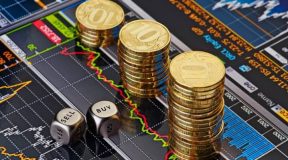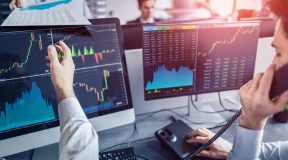Introduction
Trading is one of the most dynamic and potentially rewarding activities in the financial world. Whether it’s buying and selling stocks, currencies, commodities, or cryptocurrencies, trading requires a combination of knowledge, strategy, and discipline. Unlike investing, which focuses on long-term wealth creation, trading emphasizes taking advantage of short-term market movements. Understanding the principles of trading, the types of markets, and risk management strategies is essential for both beginners and experienced traders aiming for consistent profits. This guide explores the world of trading in depth, providing insights into strategies, tools, and best practices.
Understanding Trading
What is Trading?
Trading is the act of buying and selling financial instruments to profit from price movements. Traders aim to purchase assets at a lower price and sell them at a higher price, or in some cases, sell first and buy later to benefit from falling prices. The focus is on short-term gains, leveraging market volatility to generate profits. Unlike investors who focus on long-term growth, traders monitor market trends, economic news, and technical signals to make informed decisions.
Key Trading Markets
Trading spans multiple markets, each with its own characteristics, volatility, and opportunities.
- Stock Market: Trading stocks involves buying shares of companies listed on exchanges like the NYSE or NASDAQ. Traders analyze company performance, market sentiment, and industry trends.
- Forex Market: The foreign exchange market deals with currency pairs such as EUR/USD or GBP/JPY. Forex trading is highly liquid and operates 24/7, making it attractive for day traders.
- Commodities Market: Traders buy and sell physical goods like gold, oil, and agricultural products. Commodity trading often reflects global economic conditions and geopolitical events.
- Cryptocurrency Market: Digital currencies like Bitcoin, Ethereum, and other altcoins offer high volatility and potential for significant short-term gains. Cryptocurrency trading requires understanding blockchain technology and market psychology.
- Derivatives Market: Instruments like futures, options, and CFDs (Contracts for Difference) allow traders to speculate on price movements without owning the underlying asset. These are often used for hedging or leveraging positions.
Types of Trading
Day Trading
Day trading involves buying and selling assets within a single trading day. Positions are closed before the market closes, minimizing overnight risk. Day traders rely heavily on technical analysis, charts, and real-time news to make rapid decisions. Key techniques include scalping, momentum trading, and breakout strategies.
Swing Trading
Swing trading focuses on capturing price movements over several days or weeks. Swing traders identify trends and patterns to profit from medium-term market swings. Technical indicators, candlestick patterns, and support/resistance levels are critical tools in swing trading.
Position Trading
Position traders hold trades for weeks, months, or even years, focusing on long-term market trends. This style blends trading and investing principles. Fundamental analysis, macroeconomic trends, and company financials guide decisions in position trading.
Scalping
Scalping is a high-frequency trading style where traders make multiple trades per day to capture small price movements. It requires strict risk management, quick execution, and low transaction costs to be profitable. Scalping is particularly common in forex and highly liquid stock markets.
Key Trading Strategies
Technical Analysis
Technical analysis involves studying historical price data to predict future market movements. Common tools include:
- Charts: Line charts, bar charts, and candlestick charts reveal market trends.
- Indicators: Moving averages, RSI (Relative Strength Index), MACD (Moving Average Convergence Divergence) signal potential entry and exit points.
- Patterns: Head and shoulders, double tops, and triangles help traders identify potential reversals or continuations.
Fundamental Analysis
Fundamental analysis evaluates the intrinsic value of an asset based on economic indicators, company financials, or global events. Traders use earnings reports, GDP data, interest rate changes, and geopolitical developments to anticipate price movements. Fundamental analysis is more prominent in position and swing trading.
Sentiment Analysis
Market sentiment reflects the collective mood of traders and investors. Sentiment analysis gauges bullish or bearish behavior using tools like the CBOE Volatility Index (VIX), social media trends, or trader surveys. Understanding sentiment helps traders anticipate market reactions to news or events.
Algorithmic Trading
Algorithmic trading leverages computer programs to execute trades based on predefined criteria. Algorithms can monitor multiple markets, react faster than humans, and minimize emotional bias. High-frequency trading (HFT) is a subset of algorithmic trading focusing on very short-term opportunities.
Risk Management in Trading
Successful trading requires disciplined risk management to protect capital and minimize losses. Key components include:
- Position Sizing: Determine the amount of capital allocated to each trade based on risk tolerance.
- Stop-Loss Orders: Predefined exit points prevent excessive losses on losing trades.
- Diversification: Trading multiple assets reduces the impact of a single market’s adverse movement.
- Risk-Reward Ratio: Aim for trades where potential reward outweighs potential risk, typically 2:1 or higher.
- Emotional Control: Avoid overtrading, revenge trading, or impulsive decisions driven by fear or greed.
Tools and Platforms for Trading
Modern trading relies on advanced platforms and tools for analysis, execution, and monitoring.
- Trading Platforms: MetaTrader 4 and 5, Thinkorswim, TradingView, and Interactive Brokers offer charting, technical indicators, and order execution.
- Market News Services: Bloomberg, Reuters, and financial news websites provide real-time updates and economic reports.
- Trading Journals: Documenting trades, strategies, and outcomes helps refine skills and identify mistakes.
- Mobile Apps: Many brokers provide mobile trading apps to monitor positions and execute trades on the go.
Common Trading Mistakes to Avoid
- Overleveraging: Using excessive leverage can amplify losses and risk account liquidation.
- Ignoring Risk Management: Failing to set stop-losses or proper position sizes can lead to catastrophic losses.
- Chasing the Market: Entering trades based on hype or emotions often results in poor timing.
- Neglecting Research: Relying solely on tips or rumors instead of analysis undermines trading decisions.
- Overtrading: Excessive trading can increase transaction costs and reduce profitability.
The Psychology of Trading
Trading is as much a mental game as a technical one. Emotional discipline, patience, and a growth mindset distinguish successful traders from novices. Cognitive biases, such as overconfidence or confirmation bias, can cloud judgment. Techniques like meditation, goal setting, and continuous learning help maintain psychological resilience.
Emerging Trends in Trading
- Cryptocurrency Adoption: Cryptos are gaining mainstream recognition, attracting traders with high volatility and 24/7 markets.
- AI-Powered Trading: Artificial intelligence and machine learning enhance prediction models and risk assessment.
- Social Trading: Platforms like eToro allow traders to follow and replicate successful strategies from experienced traders.
- Sustainable Investing: ESG (Environmental, Social, Governance) criteria influence trading decisions in stocks and commodities.
Conclusion
Trading is a challenging yet rewarding endeavor requiring a balance of knowledge, strategy, and discipline. By understanding market dynamics, leveraging technical and fundamental analysis, and practicing strict risk management, traders can navigate volatile markets and enhance profitability. Whether you are a beginner or an experienced trader, continuous learning, adaptability, and emotional control are key to long-term success in trading.
FAQ Section
- What is the difference between trading and investing?
Trading focuses on short-term market movements to generate profits, while investing aims for long-term wealth accumulation based on fundamentals. - Which trading market is best for beginners?
Stock markets are often recommended for beginners due to available educational resources, transparency, and moderate volatility. - Can trading be done full-time?
Yes, many traders operate full-time, but it requires discipline, capital, and effective risk management strategies. - What tools should a beginner trader use?
Beginner traders can start with platforms like MetaTrader, TradingView, and mobile apps, alongside market news and educational resources. - How important is risk management in trading?
Risk management is crucial. It protects capital, ensures longevity in trading, and prevents large, uncontrollable losses. - Is algorithmic trading suitable for everyone?
Algorithmic trading requires programming knowledge, technical analysis, and capital, making it more suitable for advanced traders. - Can emotions affect trading performance?
Absolutely. Fear, greed, and overconfidence can lead to impulsive decisions, making emotional discipline vital for consistent success.
This article offers a detailed overview of trading, covering types, strategies, tools, risk management, and psychology, providing a practical guide for anyone looking to succeed in the financial markets.







